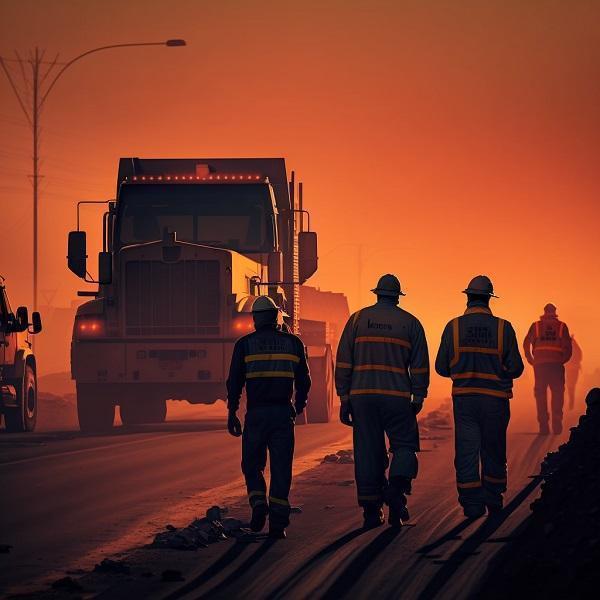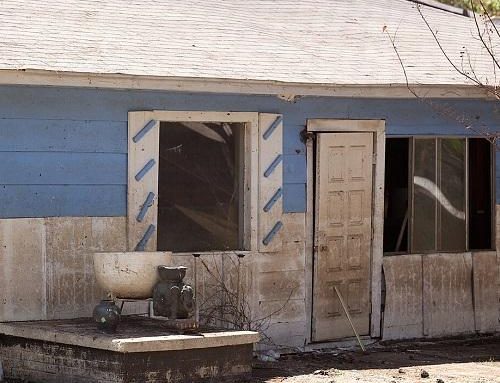Roadside and roadwork safety is a crucial issue for the construction and transportation industry. Every year, thousands of workers are injured or killed while working on or near roadways. The Occupational Safety and Health Administration (OSHA) reports that in 2020, there were 4,764 work-related deaths in the United States, with nearly half of those deaths occurring in the transportation, construction, and extraction industries. The U.S. Bureau of Labor Statistics (BLS) reveals that from 2011 to 2015, 609 workers were killed from injuries at road work zones in the United States.
It is important for workers in the construction and transportation industry to prioritize their safety and take the necessary precautions to prevent accidents and injuries. Proper personal protective equipment (PPE), awareness of surroundings, compliance with traffic laws and regulations, and clear communication are just a few of the steps that can be taken to ensure a safe work environment.
Safety is everyone’s responsibility. By following these safety tips and being aware of the hazards, we can work together to reduce the number of accidents and injuries on the job. The topic of roadside and roadwork safety is not only important for the individual worker, but also for their families, colleagues, and the general public who share the roadways with them. It’s important to keep in mind that taking the necessary precautions to ensure safety not only protects the workers but also protect the people who are traveling on the road. By taking the necessary steps to prioritize safety, we can work towards a safer and more efficient work environment for everyone.
- Wear appropriate personal protective equipment (PPE). This is an essential step to ensure that workers are protected from the hazards present on the job site. High-visibility clothing, hardhats, safety glasses, and hearing protection are all examples of PPE that should be worn. It’s important to note that hardhats should be worn at all times when working in or around heavy equipment or vehicles. Safety glasses and hearing protection should be worn when working in areas with loud noises or flying debris. The visibility clothing should be worn to increase the visibility of the workers on the job site.
- Be aware of your surroundings. Being aware of your surroundings is key to staying safe on the job site. Workers should be on the lookout for heavy equipment, vehicles, and other potential hazards. By paying attention to what’s happening around them, workers can avoid accidents and injuries. It’s also important to be aware of the work zone and to know where the traffic flow is happening and where the vehicles are moving. Additionally, workers should be aware of any environmental hazards, such as bad weather conditions.
- Follow traffic laws and work zone regulations. Workers must comply with all traffic laws and work zone regulations to ensure that the workers and the public are safe. This includes following posted speed limits, obeying traffic signals and signs, and adhering to any other rules and regulations that are in place.
- Use proper signage and traffic control measures. Proper signage and traffic control measures are essential for keeping workers and the public safe. This includes using cones, barriers, and other equipment to clearly mark the work zone and guide traffic. Workers should be aware of the traffic control measures and should follow the instructions as per the traffic management plan. Additionally, workers should also be aware of the proper use of the equipment and should be trained on how to correctly place and maintain the traffic control devices.
- Keep the work zone clear. Keeping the work zone clear of debris and other potential hazards is essential for ensuring worker safety. This includes removing debris, loose materials, and any other hazards that could cause accidents or injuries. It’s also important to keep the work area clean, organized, and free of obstructions. This will help to reduce the risk of accidents and injuries and improve the efficiency of the work.
- Use caution when working near live traffic. Always use caution when working near live traffic and make sure to use appropriate safety equipment, such as cones and barriers, to separate the work zone from live traffic. Workers should be aware of the traffic flow and should only work in the designated work zone. They should also be aware of the traffic management plan and should follow the instructions as per the plan. Additionally, workers should also be aware of the proper use of the equipment and should be trained on how to correctly place and maintain the traffic control devices.
- Communicate clearly. Good communication is key to a safe work zone. Make sure that all workers are aware of what is happening on the job site and are able to communicate effectively with one another. This includes using proper hand signals, radios or other communication devices, and making sure that everyone is aware of any changes to the job site or work schedule.
- Take regular breaks. Taking regular breaks is important for maintaining focus and preventing fatigue. This will help to reduce the risk of accidents and injuries. Additionally, workers should be aware of the importance of taking breaks and should be encouraged to take them as required.
- Use the proper tools. Make sure that all workers are using the proper tools and equipment for their tasks. This will help to reduce the risk of accidents and injuries. Workers should be aware of the proper use of the tools and equipment and should be trained on how to correctly use them. Additionally, workers should be aware of the importance of regular maintenance and inspections of their tools and equipment to ensure they are in good working condition.
- Get proper training. Make sure that all workers are properly trained for their tasks. This includes training on proper use of PPE, traffic laws and regulations, traffic control measures, and proper use of tools and equipment. Workers should also be trained on how to recognize and respond to hazards and emergency situations. By getting proper training, workers will be better equipped to handle the tasks and work safely in the work zone.
In conclusion, roadside and roadwork safety is an essential topic that should be on the minds of every worker in the construction and transportation industry. By following these safety tips and being aware of the hazards, you can help to reduce the risk of accidents and injuries, and ensure that the job is done safely and efficiently. Remember to wear appropriate PPE, be aware of your surroundings, follow traffic laws and work zone regulations, use proper signage and traffic control measures, keep the work zone clear, use caution when working near live traffic, communicate clearly, take regular breaks, use the proper tools, and get proper training. Safety is everyone’s responsibility and following these tips will help to ensure that the work is done safely and efficiently.
References:










